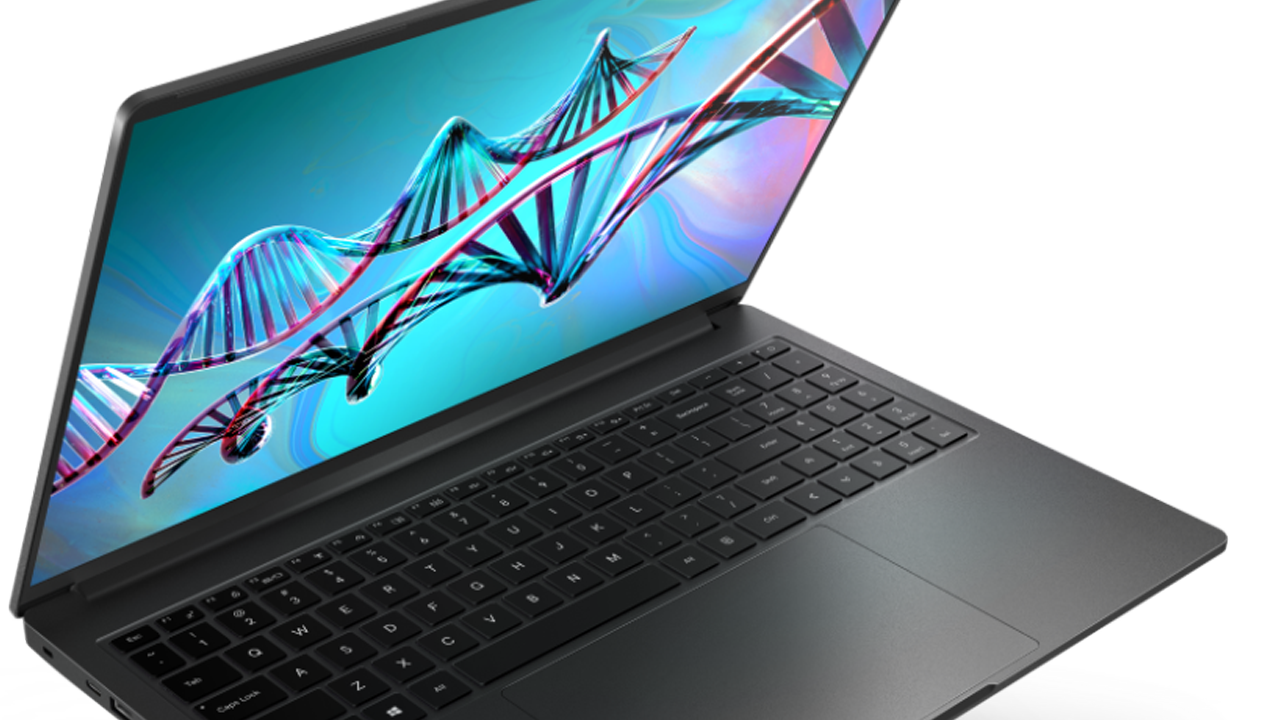I remember sitting at the bar and overhearing an MSP talking about his experience with Carbon Systems with several of his peers at our ChannelPro Defend event in Los Angeles last November. He wasn’t exactly conversational, but more like Moses coming down the mountain and spreading the word of God’s commandments. For this MSP’s business, partnering with Carbon Systems was a game changer. It continually saves his business time, money, and effort.
Carbon Systems is a unique vendor in the OEM hardware space, being the only one I currently know that is exclusive to managed services providers and concentrating on SMBs. Rather than focus on the bleeding edge of hardware, it bulk-sources components to offer competitively priced, thoughtfully built notebooks, desktops, workstations, thin clients, and servers for SMBs. You’re not going to find 12 different notebook models, for example, but one or two that fit the bill for most users.
Its key differentiator is how it can work with MPSs to deliver systems to clients. The hardware solutions can be fully customized, including the software loadout, and ships the next day. Referring back to our MSP preacher above, he was thrilled that Carbon Systems could pre-load his RMM, agents, security stack, and other tools, set his logo on the boot screen, tie it to Microsoft Autopilot, and ship it right to his customer.
That’s great and all, but only if the hardware is actually good. Notebooks often are the most deployed systems these days, and the category that would be easier to compare to the big OEMs. So, I asked Carbon Systems to ship over a notebook to test, while also giving some insight into the process of what you and your customers would experience.
The Set Up
Carbon Systems currently offers 14-inch and 16-inch notebooks for MSPs to ship to customers, the Iridium 14 and Iridium 16. For the purposes of this review, I’ll be looking at the 16-inch option, the Iridium 16. My primary focus is the hardware itself, but I wanted to see what Carbon Systems can do for MSPs and how that would look to the end user.
Prior to shipping, I asked for two pieces of software to be pre-installed, and the ChannelPro Network logo set on the boot screen. I also wanted to have it added to our Microsoft 365 tenant via Autopilot, which required a simple one-time step of authorizing Carbon Systems as a partner indirect reseller in our tenant. Days before the system arrived, it appeared in Autopilot ready to go.
Out of the Box
The Iridium 16 arrived in a nondescript, brandless brown box with an image of a notebook computer and the words “Notebook Series, Portable Personal Computer.” It was packaged well, with the entire computer encased in a black cloth sleeve, the screen itself wrapped in plastic, a cloth guard over the keyboard, and plenty of foam holding the machine in place. Another box contained the power supply, as well as a small baggie with the Intel and Nahimic stickers that normally are affixed to a shipping system.
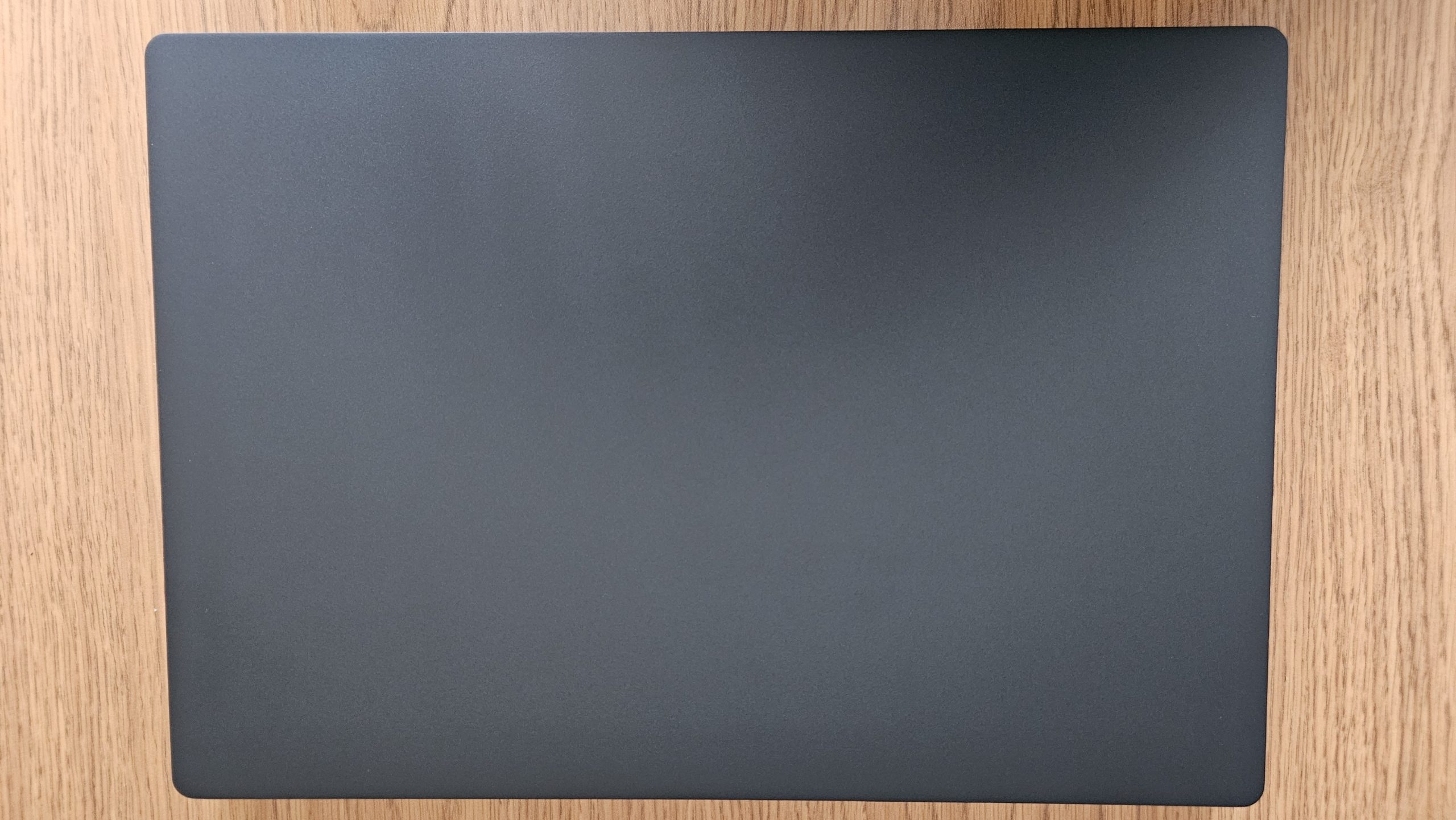
Aesthetically, the Iridium 16 I received was brandless, save for a small Carbon Systems logo and Microsoft Windows sticker on the bottom. Carbon Systems will not screen or apply custom branding for a partner outside of the boot screen, but MSPs can apply anything to the lid that can be removed with a heat gun, like a vinyl sticker, so long as MSPs opt to deliver systems to end users.
Carbon Systems goes for the safest and least offensive color in the computer world: black. I’d describe it as a dark, midnight-black that few would find unattractive, even if a little boring. The case is made from magnesium alloy, which is both durable and lightweight. Despite being metal, magnesium alloy cases can sometimes feel a little plasticky, however, the finish on the Iridium 16 feels high quality and good to the touch.

On the sides you’ll find 1 x USB-C 3.2 port with power delivery, 1 x USB-C Thunderbolt 4 port, 2 x USB 3.1 connectors, a full-size SD card reader, HDMI 2.1, 3.5mm headphone/mic jack, Kensington lock, and a barrel power connector. It strikes a good balance between too many and too few connectors, though I found the omission of RJ-45 Ethernet odd given the intended audience. The USB layout is thoughtful, putting one of each supported USB connectors on each side. The USB-C ports are unmarked, but testing showed the Thunderbolt 4 port on the right side. Major components like RAM and storage are accessible under the bottom panel, requiring only the use of a small Philips screwdriver.
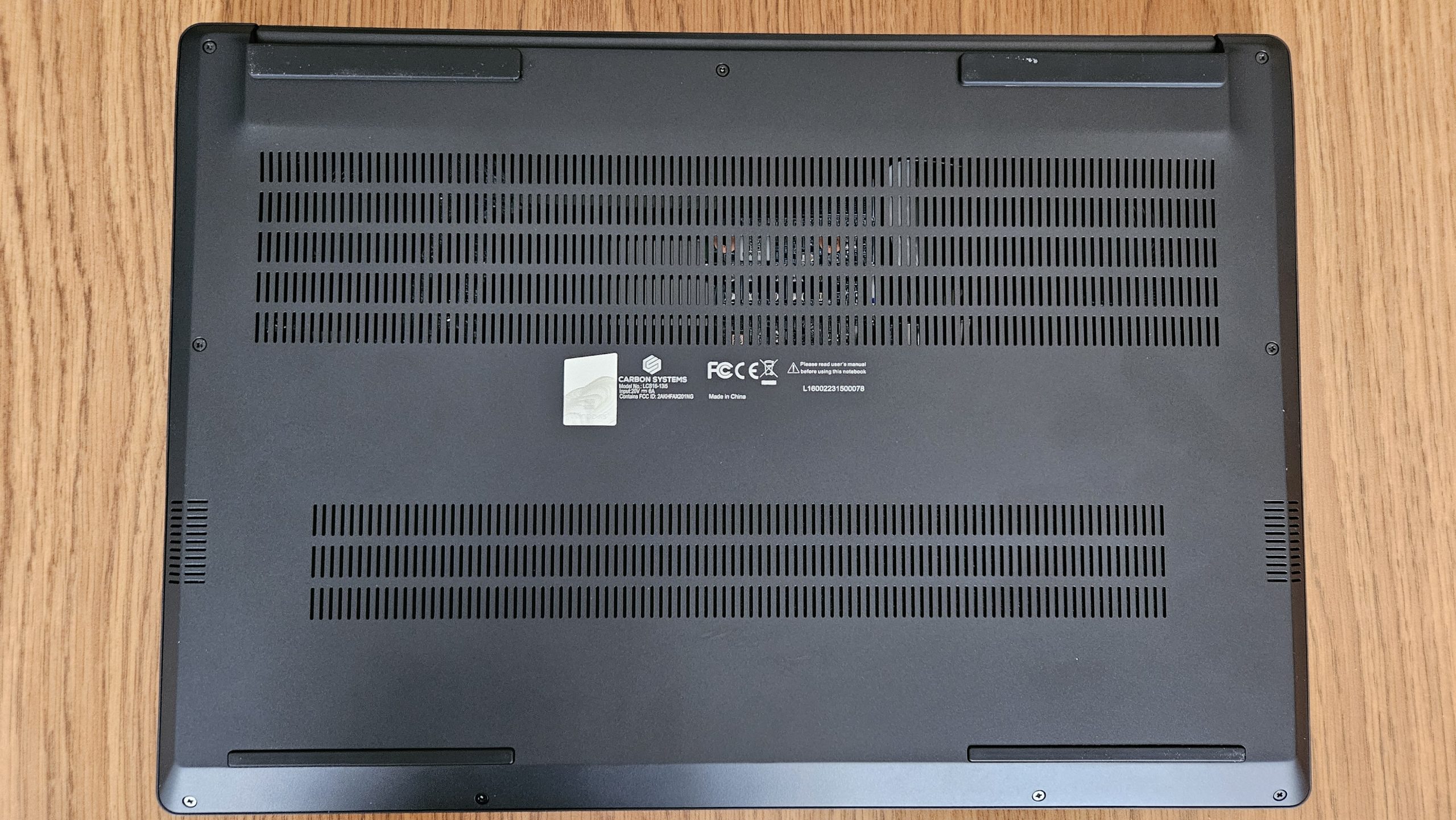
When it comes to notebooks, weight matters, and on that front it didn’t disappoint. On my scale, the Iridium 16 weighed in at 3 pounds, 4.2 ounces. Carbon Systems avoided my pet peeve of shipping a notebook with a barrel power connector and a USB-C charger, though the included charger is on the bulky side and weighs a hair over a pound itself with all cords (about 10 feet end-to-end) factored in. That gives it a bag weight of 4 pounds, 4.2 ounces. While not the best in class, it certainly keeps up with comparable offerings from the major OEMs.
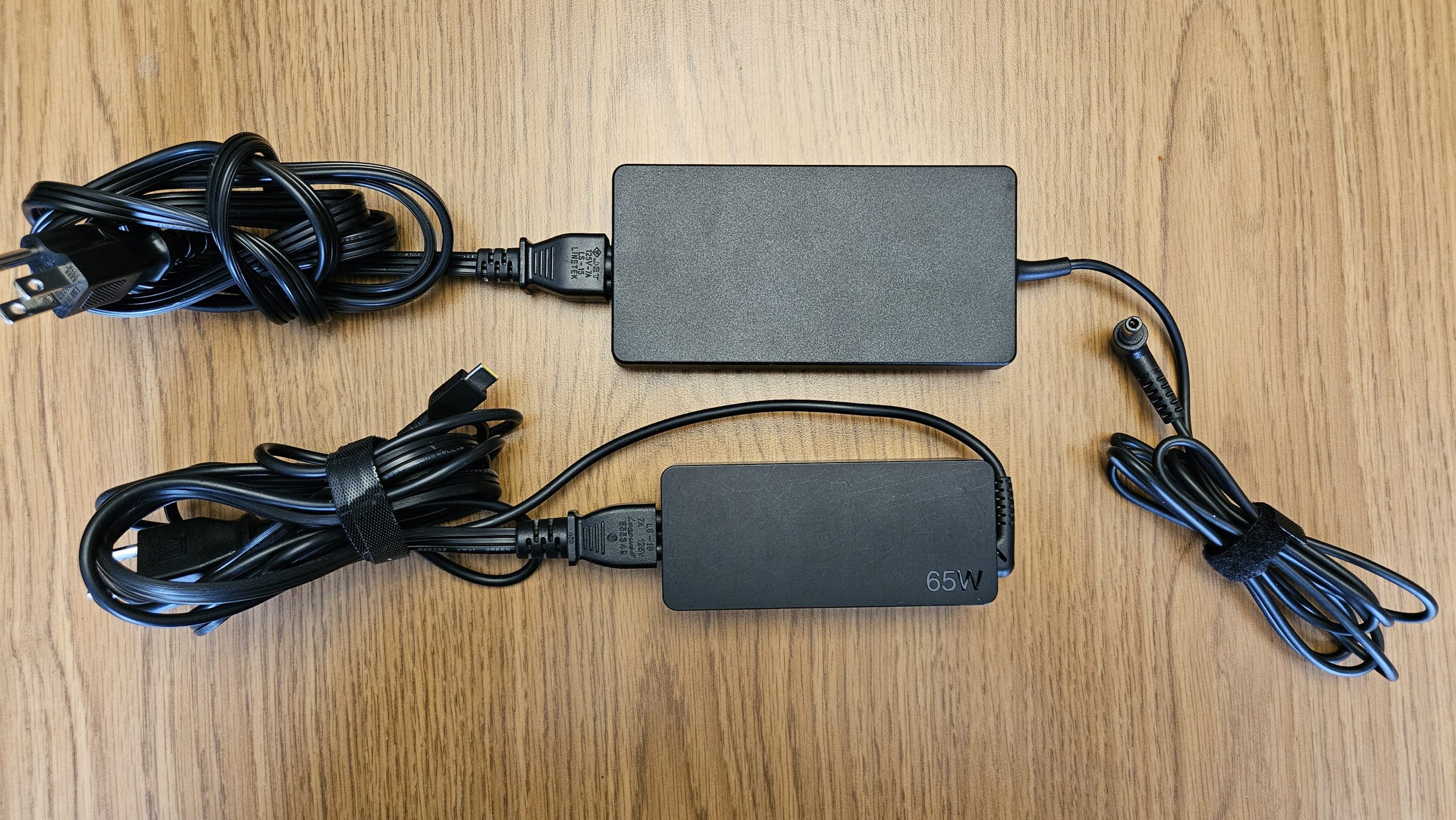
Iridium 16 Charger (top) compared to a Lenovo 65W USB-C Charger (bottom)
First Boot
I was looking forward to seeing ChannelPro’s logo as the boot screen image, but either the file I sent wasn’t usable or was forgotten in the process. Instead, it came with the Carbon Systems logo. I wouldn’t read much into that, however, since this unit was prepared outside of the company’s normal process. There’s no way in the BIOS to set it yourself, but Carbon Systems can do it remotely after a unit ships if one slips through the cracks.
The remaining experience was a slightly more streamlined Windows out-of-the-box experience. No additional screens or options were added, which major OEMs often include (like registering for a Lenovo account, for example). The desktop was a stock, mostly up-to-date Windows 11 Pro image, with no undesirable software trials or other bloatware to be found. The only included applications outside the typical Microsoft stuff were Google Chrome and one called “Control Center,” which included many useful toggles, configuration options, and other features (a few unexpected, like a complete key re-mapper). The two applications I asked to be pre-installed were indeed present.
Performance
The Iridium 16 I received shipped with a loadout for most productivity users: 13th generation Intel Core i5-13500H, 16GB of DDR5 RAM running at 4800Mhz, Intel UHD graphics, 500GB Samsung NVMe SSD, and 16-inch 16:10 WQXGA (2560×1600) SDR display running at 90hz. RAM is expandable to 64GB, while the M.2 slot can currently handle up to a 2TB drive. Note that Carbon Systems has an alternate configuration with an i7 processor and NVIDIA RTX 4060 graphics for users looking for extra horsepower.
Overall, it kept pace with me well during the daily routine. I tend to be a heavier user than most, often running three different browsers with more tabs open than should be allowed by law, plus some other tools and media creation apps. I’d get the occasional slowdown with too much going at once, particularly with some bigger applications in the mix like Photoshop, but I walked away impressed at the i5’s ability to keep up. For those interfacing with web applications and the Office suite day-to-day, this should be more than sufficient. If you’re into benchmarks, it scored an overall 5448 in PC Mark 10 and a Passmark rating of 4403, but it performed much better on the productivity side of testing (CPU, Memory, and Disk) than the overall score would indicate.
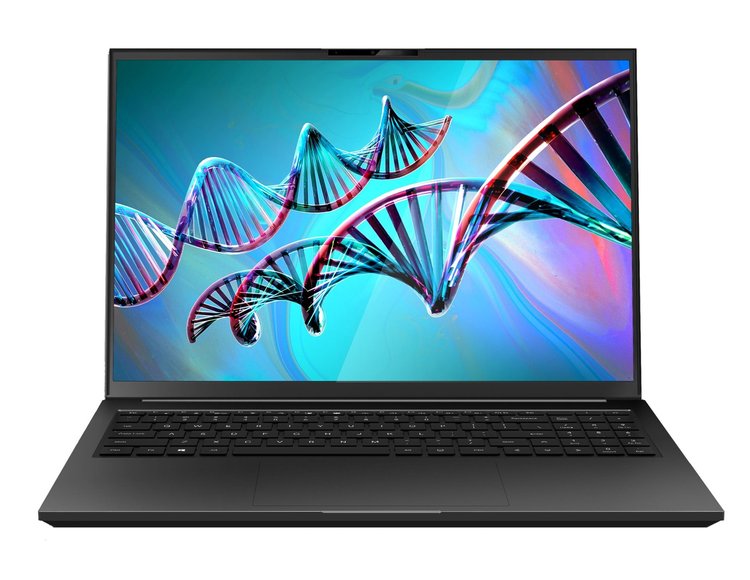
I went into this review most concerned about the display, but the Iridium 16 surprised with a screen that didn’t disappoint. At max setting, it was uniformly bright, enough so to be viewable outdoors in sunnier conditions and eyeball-searing in normal lighting. 50-60% was the indoor sweet spot for me in normal lighting. Thanks to the higher resolution panel, text rendered crisp and clear, and HD videos were sharp and vivid. The control application offers various profiles and sliders for those who wish to fine-tune the display to their liking.
As a productivity device, things like color accuracy and refresh rate are acceptable, though lack of the HDR support, while not a deal breaker by any means, would have been a nice addition.
The built-in 1080p webcam was serviceable, producing an image that was sharp and clear with the right lighting. However, outside of ideal conditions, it struggled at times: Colors were off depending on the light source and the image a little grainy even in decent lighting conditions. On the bright side, there is an IR sensor included and support for Windows Hello facial recognition, which worked very well during my time with it.
Stereo sound is provided by two bottom-firing speakers on the underside of the chassis. Performance wise, I’d call them an afterthought, as they are in most notebooks. These provide less volume than I would have expected, and there is little on the low end. Pack some headphones for when sound matters.
Keyboard and Trackpad

Carbon Systems opted to include a keyboard with a full-size 10-key pad, a decision which led to a few things a user would need to adjust to. A few keys, like the right shift key, are a little smaller than normal. The arrow keys have no separation and can be a little hard to distinguish from the rest, and the right arrow is directly under the 1 instead of a 0. I got used to most of it, but even typing this review I sometimes can’t find the arrow keys correctly without looking. A small bump added to the top or bottom arrow key would fix that problem in future models. Nonetheless, minor quibbles to get a functional, full-size 10-digit keypad. Well worth it.
The keys themselves offered a solid typing experience. It took a few days to adjust to the shorter shift key on the right side, but before long I was clacking away at a good clip. I prefer a little more key travel personally, but the amount of pressure to activate a key was spot on. As for noise, it was neither the quietest I’ve used, nor the loudest.
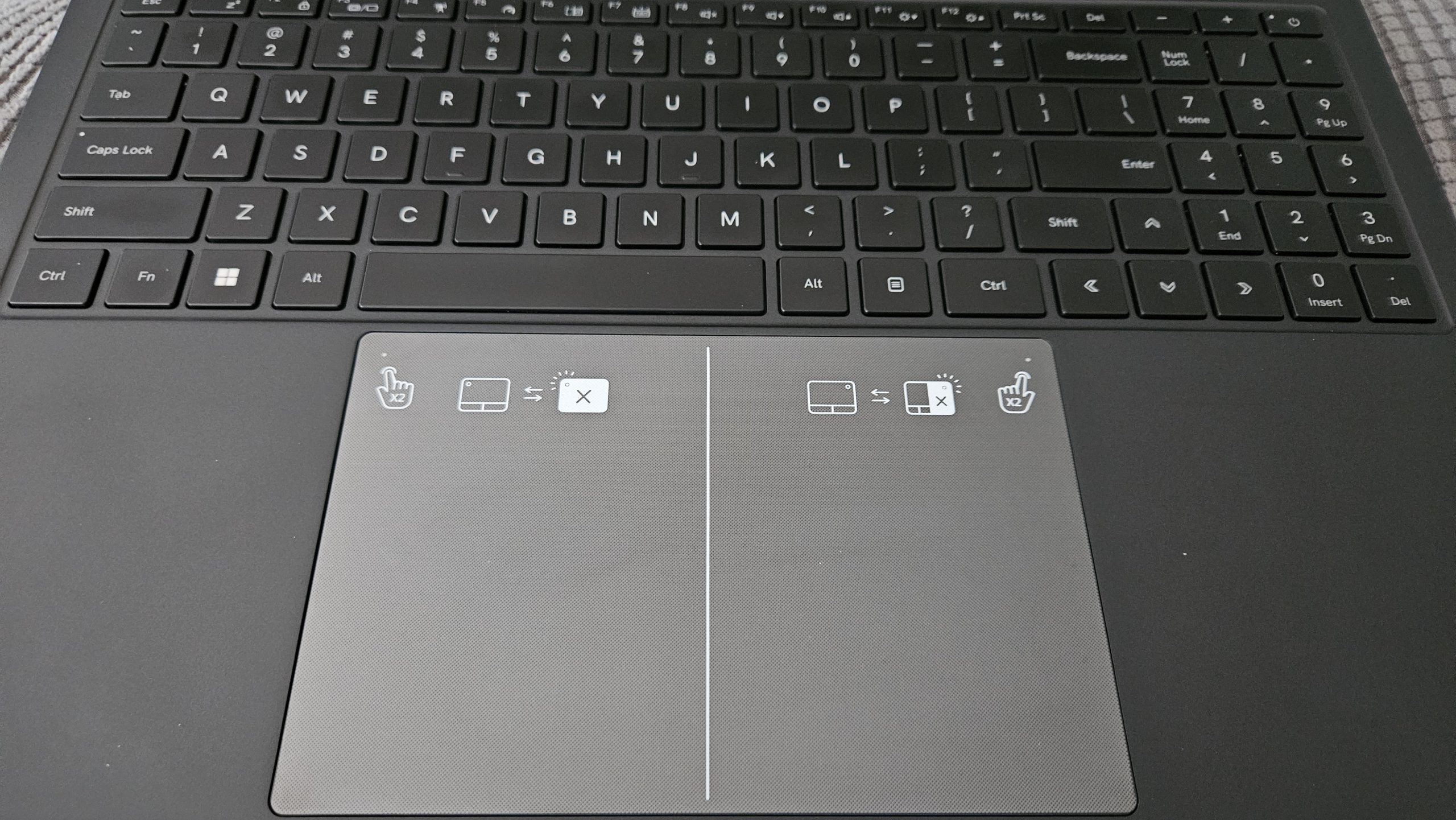
Underneath the keyboard is an enormous, multigesture trackpad that I never managed to get along with. First, it didn’t sit exactly right. The top, bottom, and left sides sat flush or just below the case line, while the right corner sat above the case line.
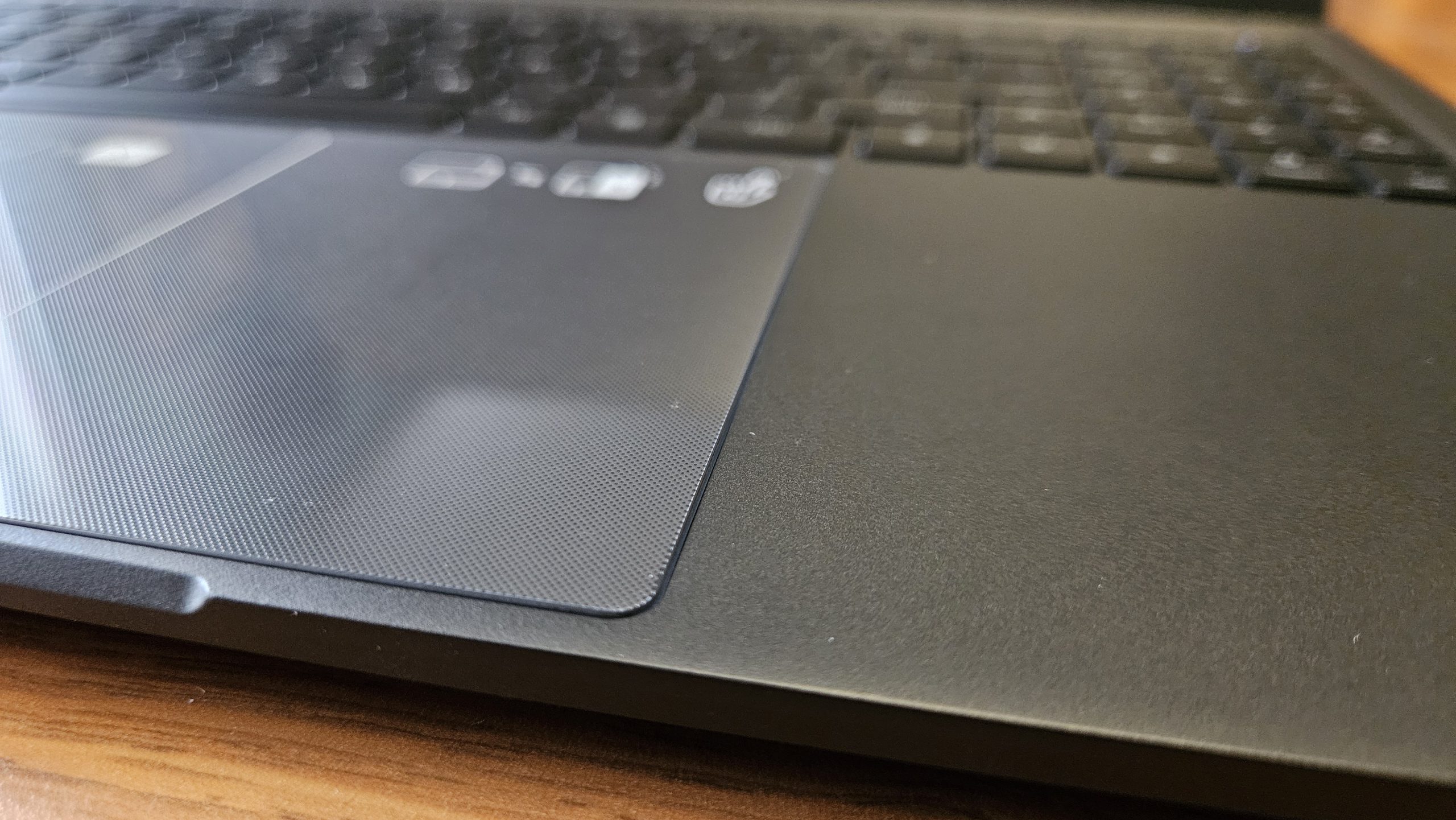
Because of the touchpad’s sheer size, a user’s palm will rest on the right side when typing, causing the cursor to bounce around at inopportune times. To remedy that, there are controls to disable the right half or disable it entirely. They are intuitive to use and built directly into the pad itself, though the plastic overlay communicating this functionality ruins the party, making it harder for fingers to smoothly glide over the trackpad’s surface. There’s no indication that it can be removed, and minutes spent trying to pick at it with my fingernail wasn’t successful. Turns out it can be removed with a knife and some patience, but most users — myself included — would conclude it’s meant to stay on.
Battery Life
Untethered from the wall, the Iridium 16’s 80Wh lithium-ion battery takes over, and it has enough capacity to keep your customers working for the day or a long flight. In my typical routine, I was normally left with 30-40% capacity after a typical workday. In my battery rundown test, which includes looping an HD movie at 50% screen brightness and 50% volume until it turns itself off, it managed 11 hours and 52 minutes before it gave up, impressive given the large, high-resolution panel.
Charging speed was also quick, in my testing taking a dead battery to 25% in 18 minutes, 50% in about 40 minutes, and to full in less than an hour and a half.
Conclusion
Choosing to partner with Carbon Systems as a hardware provider comes with a multitude of benefits to make servicing your customers easier and faster, like a 3-year, cross-ship replacement warranty should something fail. Saving you time and money is great, but your customers need to be happy with the machines you put in front of them. The Iridium 16 isn’t notebook perfection, but it hits where it really counts: solid performance, great display, good keyboard, light weight, and long battery life.
I’ll sum it up this way: If you were my MSP and this arrived at my door, you’d have a happy customer.
Specifications (courtesy of Carbon Systems)
13th generation Intel Raptor Lake i5-13500H
16″ Narrow Bezel Matte (WQXGA), 16:10, 2560×1600, 90Hz
16GB DDR5 4800 SODIMM Memory (supports up to 64 GB)
500GB M.2 2280 PCIe Gen4 x4 SSD
Intel Iris Xe Graphics
WLAN + Bluetooth, M.2 2230
4-Cell 80Wh Battery (fast charging)
2MP FHD Camera with IR face recognition and Dual Digital Mic
Glass Precision Touchpad (PTP)
Full-size Backlit Keyboard with 10-key
Nano Kensington Lock
Windows Professional (No OS optional)
Ports
1x HDMI 2.1
1x USB-C 3.2 with Power Delivery (100W)
1x Thunderbolt 4
2x USB 3.1
1x SD Card
3.5mm Audio Jack
Weight/Dimensions
3.3lbs (Magnesium Alloy Chassis)
14” x 9.7” x 0.7”
Default Configuration
Latest Windows Updates and Patches
Latest Firmware
Latest Drivers
Latest Chrome, Firefox, Adobe Reader (upon request)
Bloatware removed
All Eulas/prompts accepted, domain join ready.
Warranty
3-Year advanced cross-ship replacement
Accidental Damage Protection Warranty available




